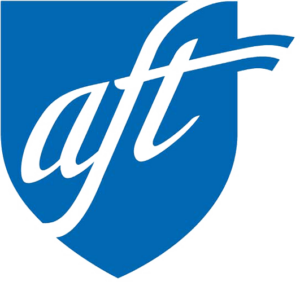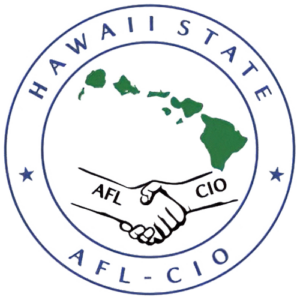IN THE BEGINNING
In 1970, the State Legislature passed Act 171 (H.R.S. Chapter 89) that allowed public employees to form unions and gain exclusive representation rights to 13 separate bargaining units. The distribution of public employees into the 13 units was done by law, rather than through unit determination hearings to determine a “commonality of interests” as it would be under the National Labor Relations Act (NLRA.) Bargaining unit 7 was designated for the faculty of the University of Hawai‘i and the Community Colleges. It utilizes a broad definition of “faculty” that includes librarians, student service specialists, and agricultural extension agents, in addition to the traditional instructional faculty and researchers. The definition was the result of a consent decree issued by the Hawai‘i Public Employee Relations Board (HPERB) now merged into the Hawai‘i Labor Relations Board (HLRB.)
Although the twelve other bargaining units moved quickly to select their exclusive representative, the various campus faculties were more split and ambivalent about unionization. When other bargaining units received pay increases as a result of negotiated contracts while the UH faculty had no change in their salaries, movements started seeking to form a union for Unit 7. The first representational election took place at the University of Hawai‘i (UH) in October 1972. There were four competing organizations: 1) an alliance of the American Association of University Professors (AAUP) and UH-Manoa Faculty Senate (University of Hawai‘i Faculty Association–UHFA) which was opposed to unionization; 2) the Hawai‘i Government Employees Association (HGEA) affiliated with the AFL-CIO; 3) the College and University Professional Association (CUPA) affiliated with the Hawai‘i Education Association/National Education Association (HEA/NEA); and 4) the Hawai‘i Federation of College Teachers (HFCT) was affiliated with the AFL-CIO. The state election rules also required that a “no union” option be on the ballot.
2034 votes were cast in October 1972. The HPERB conducted the election and reported the following results of voting: UHFA (28.8%); HFCT (28.2%); CUPA (23.5%); HGEA (4.9%); and “no representation” (14.6%). Although the UHFA/AAUP received a plurality of the votes, they were short of the needed majority; therefore, a runoff election was held in November 1972 between UHFA and HFCT. The CUPA leadership threw its support behind HFCT, in part because of the fundamental opposition of the UHFA to unionism, and the belief by the CUPA members that HFCT had agreed to merge with CUPA should they win the election. HFCT won by a vote of 995 to 805 and became the UH faculty’s first exclusive bargaining agent in November 1972. The HFCT, however, denied that the coalition agreement they had made with CUPA bound them to any future merger of the two organizations.
For the next two years, HFCT attempted to negotiate a contract with no success. The faculty voted 1301 to 279 to reject one tentative agreement agreed to by the HFCT because it included a provision that would have instituted “term contracts” which would substitute for tenure track positions for new hires. After the rejection of the tentative agreement, CUPA members initiated meetings with the UH-Manoa AAUP Chapter members that led to an agreement to protect the principle of tenure in any collective bargaining agreement. These meetings culminated in the 1974 formation of a coalition organization supported and affiliated with both the national AAUP and NEA. The organization was named the University of Hawai‘i Professional Assembly (UHPA), with the emphasis on “professional” not “union” in the name.
UHPA immediately moved to petition HPERB for the decertification of the HFCT. The HFCT leadership, which included faculty members who would later become chancellors and vice presidents, voluntarily decertified in February 1974 to allow for another representation election. This came after the HFCT initially filed a prohibited practice charge with HPERB against the UH administration for having conspired with the leaders of UHPA to decertify the union. A new certification election was then held in March. Out of 1728 votes cast, UHPA received 47%, HFCT held 36%, and “no representation” was selected by 17%. Although UHPA won that election, it was 3% short of the needed majority, necessitating a second runoff election. The final election was held in October 1974, resulting in UHPA receiving 1138 votes to HFCT’s votes of 721. The University of Hawai‘i Professional Assembly (UHPA) became the exclusive bargaining representative for the University of Hawai‘i faculty bargaining Unit 7, and has continuously held those exclusive rights under HRS Chapter 89. There have been no attempts to decertify UHPA in the forty years of its existence.
The UHPA, NEA-AAUP coalition, negotiated the first bargaining unit 7 contract, which was ratified by the faculty and entered into on March 18, 1975. At that time, the Board of Directors was represented proportionally from the two affiliates, and its sole purpose was collective bargaining.
THE EVOLUTION OF UHPA
The original Constitution and By-Laws of UHPA was amended in 1986. The constitutional revisions created an independent organization separate from the affiliations with the AAUP and NEA. The determination of national or international affiliations was left up to the Board of Directors. Representation on the Board of Directors was proportional, by discipline or campus. In 1988 the representation from UHM was changed to provide that half of the directors be elected at large.
In 1992, UHPA discontinued its affiliation with the AAUP . Since 1974, UHPA was in the unique position of being a direct affiliate of NEA. With one or two exceptions, all NEA affiliates must be affiliated with a state organization, i.e., the Hawai‘i State Teachers Association (HSTA). The meaning of direct affiliation with the NEA has been under perpetual review. Although UHPA is not a state affiliate of the NEA, it is accorded a similar status.
In March 2006, the UHPA Board of Directors approved affiliation with the Hawai‘i State AFL-CIO. Although UHPA is not affiliated with the national AFL-CIO, its national affiliate, the National Education Association has a Labor Partnership Agreement with the AFL-CIO. UHPA’s president is a vice president on the Board of the Hawai‘i State AFL-CIO.
The UHPA has been the exclusive bargaining representative (faculty union) covering all the faculty members of the University System under H.R.S. Chapter 89 since November 1, 1974. The University of Hawai‘i system (the state’s public higher education institution) consists of ten campuses (two-year institutions: Hawai‘i Community College, Honolulu Community College, Kapiolani Community College, Kauai Community College, Leeward Community College, University of Hawai‘i Maui College, and Windward Community College; four-year institutions: University of Hawai‘i at Hilo, University of Hawai‘i at Manoa, and University of Hawai‘i at West Oahu). The University of Hawai‘i began with the Manoa campus in the early 1900’s, which evolved into the “flag ship campus” with undergraduate programs, graduate degrees, and professional schools. The UH System is governed by a single Board of Regents comprised of fifteen members appointed by the Governor and approved by the State Senate. The Regents are nominated by county and at-large, in addition to one student position on the BOR.
All public employees in the State of Hawai‘i have been placed by statute in fourteen discreet bargaining units. Faculty members in Bargaining Unit 7 consist of lecturers, instructors, professors, librarians, specialists, extension agents, researchers, and the faculty in the Schools of Law and Medicine. As of 2014, there are 3,950 individuals in Bargaining Unit 7, of which, 3,070 are active members of UHPA; those choosing not to be members are required to pay a statutory dues equivalency to UHPA under the provisions of HRS Chapter 89.
A DESCRIPTION OF BARGAINING
UHPA’s primary duties and responsibilities are the negotiations of a faculty contract, and the enforcement of the terms and rights of faculty members under that contract. The first UHPA-UH Board of Regents contract took effect in 1975. There have been twelve contracts since that initial contract leading to two historic six-year contracts, followed by a two-year contract beginning on July 1, 2015, negotiated one year before the expiration of the second six-year contract:
March 1975 – June 1977
1977 – 1979
1979 – 1981
1981 – 1983
1983 – 1985
1985 – 1987
1987 – 1989
1989 – 1993
1993 – 1995
1995 – 1997
1997 – 1999
No contract between 1999 & 2001. Legislature in 1999 placed a moratorium on collective bargaining until June 30, 2001.
2001 – 2003
2003 – 2005 (covered only non-cost issues)
2003 – 2009 (retroactive 6-year contract included non-cost and cost issues)
2009 – 2015 (another 6-year contract, which included negotiation reopeners)
2015 – 2017 (effective July 1, 2015)
In 1983, the UH faculty had a two-day work stoppage. In April 2001, the UH faculty were on strike for 13 days in a significant demonstration of unified faculty support across all campuses of the UH system.
THE GOVERNANCE OF UHPA
On April 24, 2008, the active membership repealed the UHPA Charter, Constitution, and Bylaws, and approved the new Amended and Restated Articles of Incorporation and Amended and Restated Bylaws. Twenty-four Directors are elected by the active UHPA membership from each of the campuses of the UH system as set forth in the Bylaws. They serve a three-year term and may be elected to an additional term. There are five officers, elected by the Board of Directors—the President, the Vice President, the Secretary, the Treasurer, and the Executive Director, who is an ex officio member without vote. The Executive Director serves as the chief executive and administrative officer of UHPA. The Executive Director is elected by the Board of Directors to serve on the Board of Directors for five years. In addition, the Board of Directors elects the officers to serve on the Executive Committee, including the Executive Director.
UHPA has three standing committees (referred to as Board committees)—Executive Committee, Personnel Committee, and Nominations and Elections Committee. Only Directors may serve on these committees, and they exercise the authority of the Board of Directors as provided by the Board’s resolutions or charters. All other committees established by the Board are advisory with both active and retired UHPA members eligible to serve. Advisory committees may make recommendations to the Board of Directors or assist the work of the standing committees. Charters were developed and approved for each standing and advisory committee. The following advisory committees have been established: Collective Bargaining Committee, Investment, Finance & Audit Committee, and Faculty Representative Advisory Committee. Directors may modify these charters at any time.
The UHPA Board of Directors approved a quasi-representative body through the establishment of Faculty Representatives in the early 1980’s. Faculty by departments, disciplines, programs, or divisions were grouped into Primary Academic Units (PAUs) and from these groups, individuals were then selected to represent the PAU as the Faculty Representative. If the PAU consists of more than 50 faculty members, they are alloted an additional Faculty Representative. Half of the Faculty Reps are elected during even years and the other half during odd years.
The Faculty Representatives meets at least twice a year. At the Faculty Forum, the Faculty Representatives can make formal recommendations to the Board of Directors, but they cannot bind the Board of Directors to any specific action. Faculty Representatives serve as the liaison between the UHPA leadership and the respective Primary Academic Units. There are currently 123 Primary Academic Units. From polls/surveys regarding the Faculty Representative’s role and responsibilities, the Faculty Representative Advisory Committee (FRAC), appointed by the Board of Directors, is charged with planning the agenda for the Forums, in addition to recommending methods to assist Faculty Reps in fulfilling their duties through providing information and training.
On February 23, 2013, the Directors voted 13-Ayes, 10-Nays, and 1-Abstention to terminate affiliation with the National Education Association effective September 1, 2013. A poll had been taken electronically of the membership from the end of January to February 8, 2013. There were 1,202 members who responded, which resulted in 592 voting in favor of continuing with the NEA, 424 voting to disaffiliate from the NEA, 183 who were indifferent, and 3 who simply did not vote. At the Annual Membership meeting, members and leadership discussed the NEA disaffiliation. In light of those discussions, Directors passed a motion at its April 23, 2013, meeting to delay the implementation of the September 1, 2013, action to disaffiliate from the NEA. However, at the June 2013 Board of Directors meeting another motion was brought forth to delay the implementation of the September I, 2013, action to disaffiliate from the NEA pending a vote by the membership for consideration by the Board of Directors. Directors voted 10-Ayes, ll-Nays, and 1-Abstention. The motion failed. Disaffiliation took effect on September 1, 2013.
At its June 7, 2014 meeting, Directors approved changing the organization’s fiscal year from September 1 to August 31, back to July 1 to June 30, effective in 2015.
THE PROFESSIONAL AND SUPPORT STAFF OF UHPA
Under the By-laws of UHPA, the Executive Director is responsible for the hiring, firing, assignment, and supervision of the UHPA staff. In addition to the permanent staff, the Executive Director also enters into various contracts for services including legal counsel, lobbying, information systems, data analysis, political specialists, communications and media support, and external auditors. Effective August 1, 2014, the Board of Directors approved the request of the Executive Director to add the first new permanent professional staff position since 1980. The Executive Director then hired a new Assistant Executive Director for Organizing, the first UHPA staff member to reside on a Neighbor Island.
In addition to the Executive Director, there are currently four professional staff addressing contract enforcement, organizing, government and public relations, and accounting/fiscal management. There are two support staff, with one position left unfilled after the retirement of the thirty-seven year employee who served as the assistant to the Executive Director and assistant secretary to the Board of Directors.
In 1979, the staff of UHPA, which numbered eight individuals, went out on strike. The staff had been represented by SEIU. In 1984, the staff voluntarily relinquished its union representation. The provisions of the existing contract were rolled into a new UHPA Employee Personnel Policies and Procedures governing staff employment issues. The Personnel Committee periodically reviews and proposes changes to the policies based on the recommendations of the Executive Director and the staff.
The current Executive Director of UHPA has served since 1980.
1 Originally AAUP and NEA split the equivalent of one national dues amount per capita. During the 1980s, UHPA paid full dues to NEA while paying approximately half dues to AAUP. Originally AAUP and NEA split the equivalent of one national dues amount per capita. During the 1980s, UHPA paid full dues to NEA while paying approximately half dues to AAUP. The amount of AAUP was further limited to a fixed number of memberships, until the affiliation was discontinued.



